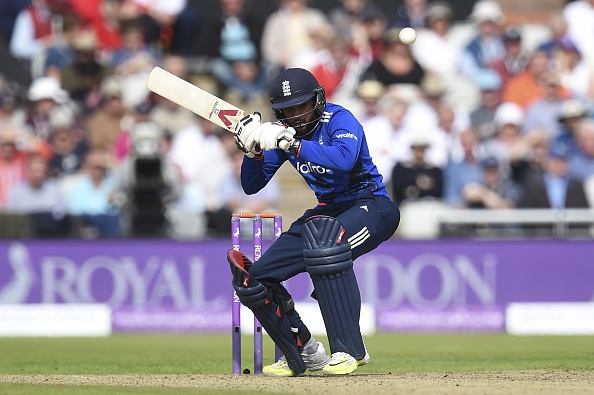England’s recent one-day series in India produced three high scoring and reasonably close games, of which Eoin Morgan’s team lost two and won the last.
You might even be tempted to think it was a good advert for cricket, though that would apply only if you weren’t a bowler. For them the white-ball game has become a plot line in a Kafka novel and a nightmare from which they cannot awake.
OK, I was primarily a bowler so I’m overstating the case slightly, but not by much. My learned colleague, Martin Johnson, explores the differences between one-day cricket now and a time when bowlers held sway elsewhere in the paper, but I’m more interested here in how it has happened and what are bowlers going to do about it?
Most interesting to me is not the big bats that pick up light, the small boundaries or the increased musculature of modern players, but the way today’s batsmen seem to pick up length and line so quickly and which enables them to hit the ball with the middle of the bat wherever it pitches.
I’m not talking about clouting spinners here or even medium pacers, but those 90mph bowlers now being treated like trundlers in the nets. Based on my facing bowlers like Malcolm Marshall and Sylvester Clarke, I cannot conceive how today’s batsmen can sight the ball, shift their body, hands and bat into position, and then smite it for six or four with such regularity against bowling that fast.
When Jeff Thomson was in his prime they used to say that the brain needed four fifths of a second to react to a moving object, but that a ball from Thommo took only two fifths of a second to reach you. In other words – good luck.
At this point let me declare that I did once hit Clarke for six, though by accident. It was during a Sunday League game against Surrey at Chelmsford in 1984 and I was trying out a heavy bat. He pitched one up, I lurched forward to drive and to my surprise the ball pinged all of 65 yards for six back over his head to the short boundary at the Hays Close End.
Inevitably, the next ball was shorter and quicker and cannoned off my shoulder for a leg bye. The one after that split Graham Gooch’s helmet in two so you can probably deduce, from Clarke’s instant displeasure, that bowlers as fast as him were not used to being hit for six back then.
It is different these days where the quicks get as much neck ache as the rest of us watching balls sail for six, but the change cannot simply be down to improvements in batsmen’s eyesight. Evolution does not work that quickly. Nor is it due to special eye exercises though the odd county side, like Middlesex, has tried them.
“I thought we train every other part of the body and mind these days so why not the eyes,” said Angus Fraser, Middlesex’s Director of Cricket. “We started a programme, but soon knocked it on the head as the players were too lazy to do the online exercises required.”
There are, however, three gizmos which have helped batsmen hit quick bowling with greater certainty and they are the bowling machine, the dog thrower (as patented by Gooch), and video replay.
By not relying on real bowlers for practice, who tire quickly when sending down anything above 85mph, batsmen have been able to increase the amount of quick balls they face, exponentially. It is that imbalance, with batsmen able to face 150 balls a session if needs be (whereas bowlers can only bowl six or seven overs at most unless practice spans six hours), which many feel has largely given the willow wielders their current dominion.
Facing that many balls (the dog thrower allows coaches to wheel away for hours without fatigue) has enabled batsmen to groove their shots, especially the bastardised baseball clout which clears the front leg and uses hips and torso for power. It has also allowed them to judge lengths and lines more quickly, crucial to making a clean connection.
Access to video footage of opponents, now widespread and available at the touch of a button on players’ laptops, has also helped. Unless opponents spring a completely unknown bowler on them, they will have studied their attack to the point of familiarity where they know all the cues and nothing in the bowlers’ actions or armoury will surprise them.
The ability to anticipate can save a batsman those vital microseconds and be the difference between miscue and maximum.
But what can bowlers or the cricket authorities do to level this particular playing field, if indeed the latter wants to do anything about it at all? Perhaps cricket fans want to see high-scoring games rather than a closer-fought battle between bat and ball that may bring them down a bit. If so, nothing will be done though if that happens bowling stocks and skills will become depleted. It is, after all, simply human nature to avoid hazardous occupations.
All batsmen will have a cocking mechanism and a mental routine before they play a big shot. One way bowlers can counter this is to disturb that rhythm. Robert Croft, once of Glamorgan and England, used to vary his action, going off different run-ups and occasionally introducing a pause before release in order to prevent batsmen setting themselves for the big shot, and even bowling from well behind the crease.
One medium-pacer I coached recently, Oman’s Rajesh Ranpura, uses a variant of that where he runs in to bowl but makes as if he has lost his run-up just before he reaches the umpire. This makes the batsmen think he will abort which alters his focus, but then Ranpura bowls the ball anyway. On the six or so occasions he tried it in last year’s T20 qualifier, every one resulted in a dot ball.
If that sounds a bit underhand, one coach I spoke to reckons that bowlers just have to become more precise with their control and skills, which could mean resurrecting those eye tests in order to improve hand-eye co-ordination.
According to the same coach, yorkers are still the best way of preventing boundaries being scored, but they come with high risk. Missing your mark, as Ben Stokes did against Carlos Brathwaite in the World T20 final last year, and it can prove extremely costly.
This is where the authorities could step in to help. By going back to using just one ball in 50-over cricket, rather than one at each end, bowlers would have a softer ball more capable of reverse swing as well one more difficult to hit for six. In addition, they should give the bowlers both wide lines, leg as well as off, and the right to bowl as many bouncers below head level as they like.
Batsmen have been dominant for too long in white-ball cricket and sitting them on their arse is one of the tried-and-tested ways to stop that.
This piece originally featured in The Cricket Paper, January 27 2017
Subscribe to the digital edition of The Cricket Paper here












